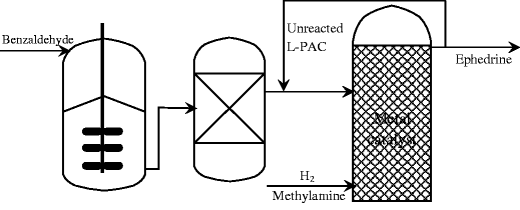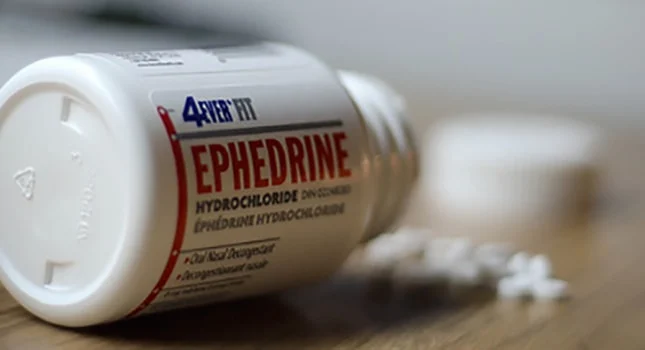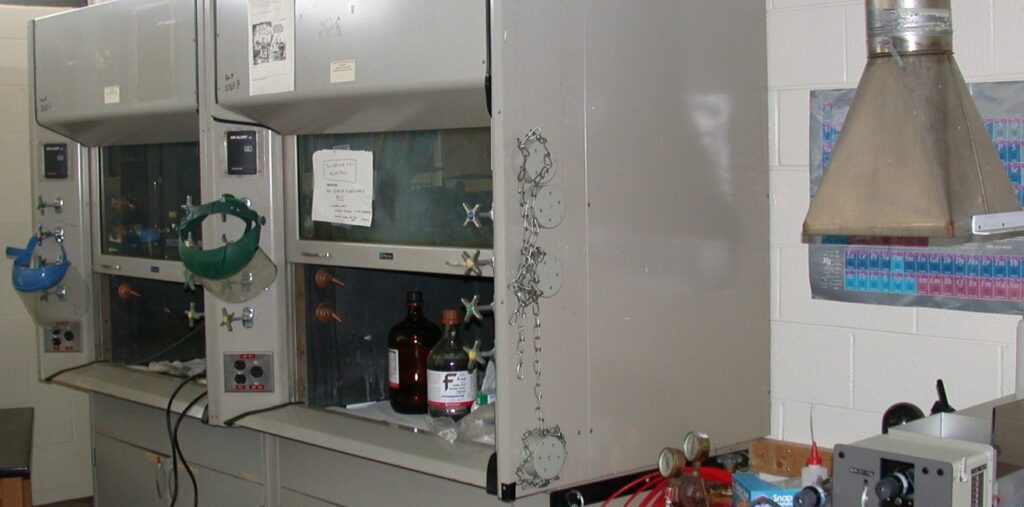- The process of creating a drug - May 23, 2023
- How do scientists model mental disorders in animals? - May 23, 2023
Introduction
Phenylacetylcarbinol (PAC) is a ketone with an important chemical structure, that has attracted the attention of researchers in the fields of chemistry and biochemistry. One of the main features of phenylacetylcarbinol is its high stability and low reactivity under a wide range of conditions, which makes it attractive for use in various synthesis processes. These properties make phenylacetylcarbinol an important intermediate block in the synthesis of biologically active compounds and drugs. Its main use is to obtain ephedrine and pseudoephedrine. From which you can get stimulants such as amphetamine or others.
In this article, we present an overview of the properties, reactions and applications of phenylacetylcarbinol in chemistry, including its role in the pharmaceutical industry.

Physical and Chemical Properties of Phenylacetylcarbinol
Phenylacetylcarbinol (1-hydroxy-1-phenyl-propan-2-one), is a ketone with phenyl and hydroxyl groups with a chemical formula C₉H₁₀O₂ and a molecular weight 150.18 g/mol. It is a colorless or slightly yellowish liquid with a characteristic sweet and spicy or fruity odor. It is soluble in organic solvents such as ether, ethanol, acetone and aromatic solvents. This property makes it convenient for use in various organic reactions and synthesis processes. At room temperature, phenylacetylcarbinol is stable, but it is advisable to store it in a cold place. Its density is approximately 1.12 g/mL, its melting point is about 10°C and its boiling point is 253°C.
Synthesis of Phenylacetylcarbinol
Phenylacetylcarbinol can be synthesized in various ways. Phenylacetylcarbinol is mainly produced in laboratories and industry by biosynthesis.
Biosynthesis of phenylacetylcarbinol:
Phenylacetylcarbinol is a product of a metabolic pathway, that is commonly present in various microorganisms, such as various strains of yeast and bacteria. Phenylacetylcarbinol can be obtained using baker’s yeast from glucose in a citrate buffer, benzaldehyde dissolved in ethanol and acetaldehyde.

Chemical synthesis of phenylacetylcarbinol:
Phenylacetylcarbinol is rarely prepared chemically, but it can be prepared by rearrangement from methylbenzoylcarbinol. It is prepared by heating an alcoholic solution of methiobenzoylcarbinol with concentrated sulfuric acid as a catalyst.

These synthetic methods allow the production of phenylacetylcarbinol, opening the possibility of its use in chemical processes.

Chemical Reactions of Phenylacetylcarbinol
The main use of phenylacetylcarbinol is the production of ephedrine.
Industrially, ephedrine is obtained from phenylacetyl carbinol by reductive amination. Reductive amination is carried out in reactors with methylamine and hydrogen using platinum catalysts.

The more common method in laboratories, is to obtain ephedrine in two stages using a microwave oven. In the first stage 2-(methylimino)-1-phenyl-1-propanol is obtained from phenylacetyl carbinol. Phenylacetyl carbinol and methylamine are added to ethanol and the reaction is carried out in a microwave oven.

In the second step 2-(methylimino)-1-phenyl-1-propanol is reduced to ephedrine. 2-(methylimino)-1-phenyl-1-propanol and sodium borohydride are added to ethanol, the reaction is carried out in a microwave oven.

These reactions are the basis for the further use of phenylacetylcarbinol for its use in the synthesis of biologically active molecules and pharmaceuticals.
Semi-synthetic process for large-scale production of ephedrine from phenylacetyl carbinol and benzaldehyde. First stage – yeast fermentation for the biotransformation of endogenous pyruvate and exogenously supplied benzaldehyde to phenylacetyl carbinol. Second stage – vessel for extraction of phenylacetyl carbinol from the culture medium. Third stage – reductive amination of phenylacetyl carbinol using metal catalyst in the presence of hydrogen and methylamine.

Applications of Phenylacetylcarbinol
Phenylacetyl carbinol is used in the production of pharmaceuticals and in the synthesis of aromatic compounds.
- Pharmaceutical Industry: Phenylacetylcarbinol is used as an important intermediate in the synthesis of various pharmaceuticals. It can be used as a “building block” to produce a variety of bioactive substances such as medicinal compounds and other bioactive molecules. For example, ephedrine and pseudoephedrine can be obtained from it.
- Synthesis of Aromatic Compounds: Phenylacetylcarbinol can be used in the synthesis of various aromatic compounds, that have significant commercial value. It can be used in the production of aromatic esters, ketones and other chemical compounds, that are used in the cosmetics and perfume industries. For example, piperonal can be obtained from it.
These applications of phenylacetylcarbinol show its importance in various fields of chemistry.

Health Effects of Phenylacetylcarbinol
When used correctly, phenylacetylcarbinol has minimal impact on human health and the environment. However, as with any chemical appropriate precautions must be taken. Some of the important health effects include:
Toxicity: Although phenylacetylcarbinol has low toxicity, high concentrations or improper use can lead to toxic effects on the body.
Skin and Mucous Membrane Reactions: Direct contact with phenylacetylcarbinol may cause irritation to the skin and mucous membranes, therefore safety precautions must be taken when handling this substance.
Allergic Reactions: Some people may be allergic to phenylacetylcarbinol, which can cause allergic reactions such as skin rashes, itching and breathing problems.

Safety Precautions
Precautions when handling phenylacetylcarbinol:
- 1. Use of Personal Protective Equipment: When working with phenylacetylcarbinol, use appropriate protective equipment such as safety goggles, chemical resistant gloves and respirators to prevent contact with skin, eyes and respiratory tract.
- 2. Storage and Transportation: Phenylacetylcarbinol should be stored in closed containers at low temperatures, where it will not be exposed to moisture or light.
- 3. Work Areas and Ventilation: Work with phenylacetylcarbinol should be done in well-ventilated areas or under exhaust ventilation systems to prevent the accumulation of vapors and reduce the risk of inhalation.
Conclusion
Phenylacetylcarbinol is a chemical compound with a wide range of properties and potential applications in chemistry, pharmaceuticals and industry. Its physical and chemical properties, including high stability and reactivity, make it attractive for use in the synthesis of a variety of organic compounds, as a “building block” in the synthesis of biologically active compounds and drugs.
Overall, phenylacetylcarbinol is an important chemical compound with a wide range of applications and potential for further research in various fields of chemistry and industry.
Bibliography
- L-Ephedrine synthesis from L-phenylacetylcarbinol (L-PAC) https://bbgate.com/threads/l-ephedrine-synthesis-from-l-phenylacetylcarbinol-l-pac.1342/
- Biotransformation of Benzaldehyde into L-PAC https://bbgate.com/threads/biotransformation-of-benzaldehyde-into-l-pac.6169/
- Shukla, V., Kulkarni, P. L-Phenylacetylcarbinol (L-PAC): biosynthesis and industrial applications. World Journal of Microbiology and Biotechnology 16, 499–506 (2000). https://doi.org/10.1023/A:1008903817990
- Production of L-phenylacetyl carbinol by biotransformation: Product and by-product formation and activities of the key enzymes in wild-type and ADH isoenzyme mutants of Saccharomyces cerevisiae P. Nikolova, O. P. Ward First published: 20 August 1991 https://doi.org/10.1002/bit.260380507
- Production of l-phenylacetylcarbinol by fermentation Chandrakant M. Tripathi Suresh C. Agarwal Samar K. Basu Division of Fermentation Technology, Central Drug Research Institute, Lucknow-226 001, India Received 21 October 1996 https://doi.org/10.1016/S0922-338X(97)81900-9


